Tag Archive for: myeloma relapsed
What Is the Role of Bispecific Antibody Therapy in the Future of Myeloma Care?
What Is the Role of Bispecific Antibody Therapy in the Future of Myeloma Care? from Patient Empowerment Network on Vimeo.
From the 2023 American Society of Hematology (ASH) annual meeting in San Diego, Dr. Peter Forsberg discusses how new data and learnings around bispecific antibodies may allow this newer myeloma therapy to be used more broadly in the clinical setting.
Dr. Peter Forsberg is associate professor of medicine at the University of Colorado School of Medicine and is a specialist in multiple myeloma. More about Dr. Forsberg.
Related Resources:

Dr. Peter Forsberg | Myeloma Research News From the 2023 ASH Annual Meeting |
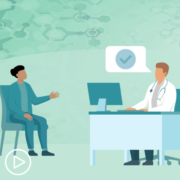
|
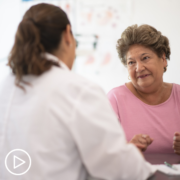
What Myeloma Patients Need to Know About Bispecific Antibodies |
Transcript:
Dr. Peter Forsberg:
The role of bispecific antibodies is one that’s evolving quickly. We’ve had new therapies approved over the past 12 months. We may get more approvals in the future. And we’re certainly going to get increasing data around using those treatments in our clinics outside of the controlled clinical trial setting as well as maybe information around more diverse utilization in different treatment settings.
So, I think these are going to be medicines that are used much more broadly in the future than they are now. Right now, they have a really impactful role in a certain group of patients.
I think that’s going to become something that’s broader in the future. And I really do think there’s something that’s going to help us to improve on already a really good group of options in earlier relapsed settings and maybe even upfront treatment of myeloma in the future.
So, a lot to be figured out, a lot of refinement in the future about how and when to use these treatments. But it’s very clear that they’re going to have a huge impact in different settings.
Dr. Peter Forsberg | Myeloma Research News From the 2023 ASH Annual Meeting
Dr. Peter Forsberg | Myeloma Research News From the 2023 ASH Annual Meeting from Patient Empowerment Network on Vimeo.
Myeloma specialist Dr. Peter Forsberg reviews highlights from the 2023 American Society of Hematology (ASH) annual meeting. Dr. Forsberg shares what this promising news means for patients as well as advice for talking to your doctor about emerging therapies.
Dr. Peter Forsberg is associate professor of medicine at the University of Colorado School of Medicine and is a specialist in multiple myeloma. More about Dr. Forsberg.
Related Resources:
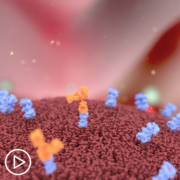
What Is the Role of Bispecific Antibody Therapy in the Future of Myeloma Care? |
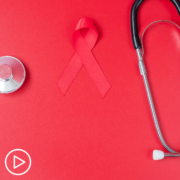
|
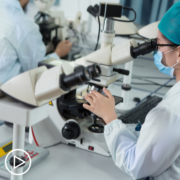
|
Transcript:
Dr. Peter Forsberg:
My name is Peter Forsberg. I’m an associate professor at the University of Colorado. I am a specialist in multiple myeloma and other plasma cell disorders. And I’m here at ASH, where it’s always the most exciting time of the year for those of us in the hematology and hematologic/oncology community, where we are getting all the breaking information around all kinds of diseases.
But a really exciting time in terms of new findings for myeloma and the other diseases we deal with.
I think it covers a really broad spectrum. That’s been one of the really exciting things about myeloma over the past decade really is that we’ve had developments in so many different directions in terms of new therapies, new options for patients who need later line treatments, new options improving early line therapy.
Certainly exciting to have a couple of very big studies that are being presented this year, two Phase III trials that look at four drug combinations in the newly diagnosed myeloma setting, which both show fantastic effectiveness. So, hopefully, really going to help expand that for patients with new myeloma to get really the best treatment out of the gate. And then, really maturing data around new immune therapies, both in the settings where they’re currently approved, which are sometimes later lines for myeloma patients. And then, more data on earlier lines for those therapies where they’re likely to be used in the very near future.
At this meeting and over the past year, and ASH is always a big summation of a lot of the research that’s going on at any given time, the breakthroughs that are happening in myeloma, the innovation that’s happening in myeloma is very impactful for patients. It’s giving us great, improved options for earlier line patients allowing them to live better, live longer, preserving quality of life and then, giving us diverse new options in relapsed myeloma where we’ve had good tools but the broadening of that toolbox is very exciting.
And it allows new and really effective options across all kinds of patient types. So, it’s really impactful across different settings.
Patients shouldn’t hesitate to ask what are the new and developing treatment options, to ask their physicians are there new treatment options for myeloma that might be a fit for me now or in the future? Don’t hesitate to think about what might come down the road, even if you’re in a steady place with your myeloma because things are changing quickly.
Our options now are different than they were six or 12 months ago and they’re going to be different six or 12 months from now.
So, don’t hesitate to ask what’s new, what’s coming, should I meet with a myeloma specialist to discuss some of those specific options and whether they’re a fit for me. So, don’t hesitate to be the squeaky wheel a little bit and say what might be out there for me now or in the future.
Expert Perspective | Understanding the Recent FDA CAR T-Cell Therapy Warning
Expert Perspective | Understanding the Recent FDA CAR T-Cell Therapy Warning from Patient Empowerment Network on Vimeo.
The Food and Drug Administration (FDA) announced in December 2023 that it is investigating reports of secondary cancers in some patients who have undergone CAR T-cell therapy, noting that “the overall benefits of these products continue to outweigh their potential risks for their approved uses.” Timothy Schmidt, a myeloma specialist, shares his perspective on the recent news.
Dr. Timothy Schmidt is an Assistant Professor in the Department of Medicine, Division of Hematology, Medical Oncology and Palliative Care at the University of Wisconsin School of Medicine and Public Health. More about Dr. Schmidt.
Related Resources:

|

|
Transcript:
Dr. Timothy Schmidt:
So, in terms of the FDA update about CAR T-cell therapies, there was a recent warning, essentially, about an increased risk for a specific type of lymphoma involving T cells. And we don’t really know a whole lot about this just yet. But what we do know is that these events are rare and that we need to investigate it further. I think as of right now, this is not a huge area of concern for most of us, myself included.
When we have patients who are candidates for CAR T-cell therapy in multiple myeloma, generally, this means that patients are in need of a very effective treatment to get their disease under control and to do so for a long period of time. And the potential benefit of this therapy dramatically outweighs any of these kinds of long-term consequences or these newer things that are starting to develop. Now, I do think that this is something that we’re going to need to continue to keep an eye on. And we certainly can’t ignore this, especially as we start to move CAR T-cell therapy into earlier lines of therapy.
But as of right now, I would not weigh this very heavily in my decision whether to do a CAR T-cell therapy for somebody with multiple myeloma.
What Should Myeloma Patients Ask About Developing Research?
What Should Myeloma Patients Ask About Developing Research? from Patient Empowerment Network on Vimeo.
Myeloma research is evolving quickly, so what should patients ask their doctor to stay up to date? Dr. Timothy Schmidt, a myeloma specialist, shares advice.
Dr. Timothy Schmidt is an Assistant Professor in the Department of Medicine, Division of Hematology, Medical Oncology and Palliative Care at the University of Wisconsin School of Medicine and Public Health. More about Dr. Schmidt.
Related Resources:

|

|
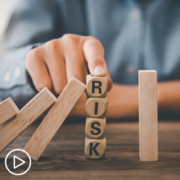
Myeloma CAR T-Cell Therapy: How Does It Work and What Are the Risks? |
Transcript:
Dr. Timothy Schmidt:
I think that in terms of new and developing options, patients should be asking their healthcare provider, their oncologist if they have experience using some of these newer drugs, specifically, the bispecific antibodies and CAR T-cell therapies.
A lot of centers are starting to use these, particularly academic centers and some larger community centers as well. But not everywhere has experience using these. And so, asking your provider if it’s something that they would be a candidate for, particularly if the current treatment that patients are on is not working. And if your provider is not necessarily familiar with them, do they know somebody who is.
And could you go at least for a discussion to talk to a myeloma specialist about whether these medications are right for you or whether there’s a clinical trial that they might be a candidate for, because what we’ve learned is that earlier implementation of some of these really effective therapies can really be a big deal for patients with myeloma.
Patients can learn more about clinical trials from a variety of different outlets. I think the first place to start is with your local provider, your oncologist, asking that person if there is a clinical trial available. Most likely, the local provider is going to be able to point the patient in the right direction or at least let them know if something is going to be feasible for them. After that, often it involves reaching out to a local center, an academic center and getting a referral to somebody to see what is available at that site.
But there are also a variety of websites that can be used to search for clinical trials if there are particular patients who are very interested in specific therapies, CAR T, bispecifics, or others that you can look around and try to find places that would be best for them.
Myeloma Research Highlights From ASH 2023
Myeloma Research Highlights From ASH 2023 from Patient Empowerment Network on Vimeo.
Dr. Timothy Schmidt, a myeloma specialist, walks through research and treatment news from the recent 2023 American Society of Hematology (ASH) annual meeting.
Dr. Timothy Schmidt is an Assistant Professor in the Department of Medicine, Division of Hematology, Medical Oncology and Palliative Care at the University of Wisconsin School of Medicine and Public Health. More about Dr. Schmidt.
Related Resources:
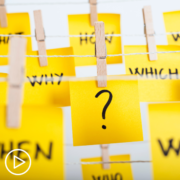
|

Expert Perspective | Understanding the Recent FDA CAR T-Cell Therapy Warning |

|
Transcript:
Dr. Timothy Schmidt:
So, there’s constantly a lot of new information and data coming out about multiple myeloma and new therapies. I would say at this ASH ’23 meeting, I think the biggest highlight is further confirmation of the utility of using CD-38 antibodies in patients with newly diagnosed multiple myeloma. We have a plenary abstract for the use of isatuximab (Sarclisa) in combination with carfilzomib (Kyprolis), lenalidomide (Revlimid), and dexamethasone (Decadron) that I’m anxiously awaiting hearing the data of later today, as well as a late breaking abstract talking about the use of daratumumab in combination with bortezomib (Velcade), lenalidomide, and dexamethasone.
And both of these are studies that appear to show superiority of a four-drug regimen over a three-drug regimen. And we’re certainly looking forward to seeing the finalized data presented and extending the implementation of these highly effective therapies for patients with newly diagnosed multiple myeloma.
I think what we’re also seeing here is just further data being presented about bispecific antibodies, CAR T-cell therapies, and other novel combinations in the relapsed and refractory setting, as well as some really interesting insights coming out in terms of the myeloma pre-cursor setting of MGUS from the IStopMM Trial and some other research. So, really excited to learn more about how to use all of these exciting new tools that we’ve got for patients with multiple myeloma across the disease spectrum.
So, what this news means for myeloma patients is that outcomes are getting better. What it means is that we now know how best to use some of these tools that we’ve been developing for over a decade now in terms of maximizing responses, maximizing the number of patients who achieve remission and not just achieve remission but have a lasting remission in that first-line setting. And this is really going to lead to improved survival as well as improved quality of life when we start seeing year upon year of really high-quality survival from most of our patients with multiple myeloma.
We’re also learning how best to use some of the even newer therapies. T-cell directing therapies such as CAR T-cells and bispecific antibodies. We are incredibly excited about how effective these drugs are for patients with multiple myeloma.
And these are things that we’re already using in the clinic. And it’s important for patients to be aware so that when it becomes time to use these strategies that we can make sure that all patients have access to them.
Stem Cell Transplants for Myeloma: An Update
Stem Cell Transplants for Myeloma: An Update from Patient Empowerment Network on Vimeo.
Expert Dr. Jeffrey Matous discusses the evolving role of stem cell transplant as a “standard of care” treatment and reviews therapies that are under study as alternatives to stem cell transplant.
Dr. Jeffrey Matous is a myeloma specialist at the Colorado Blood Cancer Institute and the assistant chair in myeloma research for Sarah Cannon Research Institute. Learn more about Dr. Matous.
Related Resources:

|
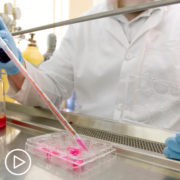
|

|
Transcript:
Katherine:
PEN community member, Greg, sent in this question. “Can you discuss any future or potential changes to using stem cell transplant for myeloma patients? How would you counsel patients who do not want to pursue a transplant as a treatment option?”
Dr. Jeffrey Matous:
So, for stem cell transplant in myeloma, for years, it’s been the standard of care for suitable patients.
And every couple years, I liken this to that game we used to play called King of the Hill growing up where stem cell transplants, King of the Hill, and everyone tries to knock stem cell transplant off the hill. And so far, it really hasn’t happened. And so, transplants still, I think, an important part of the overall care for suitable patients.
For patients who are eligible and safe enough to undergo transplant. However, not all – now, will this be challenged in the future? And the answer is – I think the next challenger, and this will be a serious challenger, will be CAR T-cell therapy. And so, we have to figure out if CAR T-cell therapy or the bispecific antibodies are safe enough to give at the beginning and as effective as stem cell transplant and what the long-term side effects, how they might differ, as well, so that question is going to be tackled in the myeloma word, but it’s going to be several years until we have an answer there, for sure.
So, for my patients who are otherwise candidates for stem cell transplant, but who don’t want to do it, usually, I’ll say, “You may change your mind in the future. In myeloma, it’s important to keep all your options open and you should at least discuss with the transplant center collecting and freezing away your stem cells for a rainy day to keep that option open to you.” So, even you’re thinking of not doing it, it might be a good idea, it probably is a good idea, to harvest and store your stem cells at a transplant center.
And then, if you’re not going to do transplant up front, they key is to stay on prolonged maintenance therapy.
We know that that’s one of the keys for making survival as long as possible in patients who don’t do a transplant is to continue on ongoing maintenance therapy as long as possible. Don’t curtail your therapy just because you’re not doing a transplant.
Should You Push for a Stronger Myeloma Treatment at Relapse?
Should You Push for a Stronger Myeloma Treatment at Relapse? from Patient Empowerment Network on Vimeo.
Should myeloma patients consider choosing a more aggressive treatment at relapse? Expert Dr. Jeffrey Matous explains the revised approach to choosing treatment at this stage and shares examples of second-line therapies that may be options for relapsed patients.
Dr. Jeffrey Matous is a myeloma specialist at the Colorado Blood Cancer Institute and the assistant chair in myeloma research for Sarah Cannon Research Institute. Learn more about Dr. Matous.
Related Resources:

|

|
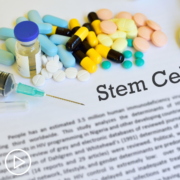
|
Transcript:
Katherine:
Kendall writes, “I’m in the maintenance stage following initial diagnosis and treatment. At first relapse, is it appropriate to push for stronger treatment in hopes of a cure?”
Dr. Jeffrey Matous:
Yeah, so the answer to that has changed. The answer is yes, and so, the – it used to be said in myeloma that your best treatment was your first treatment. Then, if you relapsed, that the treatments didn’t work as well, and the remissions did not last as long. Throw it out, so now, we get multiple chances to get really deep remissions in patients, and we should be every bit as greedy when we’re treating relapsed disease, at least initially, as we are when we treat disease at the very beginning. We know, for example, that there are many second-line therapies. I’ll just throw out some examples – daratumumab (Darzalex), pomalidomide dex, daratumumab, Revlimid dex, daratumumab Velcade dex.
Not to mention, the T-cell therapies that can put patients in remissions that are so deep that we can’t even find myeloma cells using very sophisticated molecular techniques, so be greedy.
What Myeloma Patients Need to Know About Bispecific Antibodies
What Myeloma Patients Need to Know About Bispecific Antibodies from Patient Empowerment Network on Vimeo.
Dr. Jeffrey Matous is a myeloma specialist at the Colorado Blood Cancer Institute and the assistant chair in myeloma research for Sarah Cannon Research Institute. Learn more about Dr. Matous.
Related Resources:

|

|
Transcript:
Katherine:
Let’s switch gears now to another therapy we’ve been hearing about: bispecific antibodies. One has been recently approved for myeloma, teclistamab (Tecvayli), so let’s start with what are bispecific antibodies and who might they be right for?
Dr. Jeffrey Matous:
And strap on your seatbelt, because there’s a whole bunch of them coming, I think, for approval. So, the T-cell redirecting antibodies, it’s a different strategy for trying to get your T cells, the patient’s T cells, to attack the myeloma cells. And in CAR T-cell therapy, it’s a single infusion. That’s the treatment. And the bispecific antibodies that I often call T-cell redirecting antibodies, because they redirect the T cells to the myeloma cell, these are given over a continuous period and it might as long as you tolerate it, as long as it’s working. It might be for a year. And they are given either under the skin as a subcutaneous injection, or in the vein.
And there are many, many different of these T-cell redirecting antibodies, the bispecific antibodies. How they work, I just do this with my patients. I hold up my hand and I say the bispecific antibodies have two hooks on them, and one hook recognizes the T cell and latches onto the T cell, and the other hook latches onto the myeloma cell. And then, what it does, it brings the T cell in proximity to the myeloma cell. Then, the T cell says “Oh, aha. I’m supposed to kill this myeloma cell,” and usually does it. Now, the part that connects the T cell and these bispecific antibodies is always the same. It’s CD3. However, the part that sticks on the myeloma cell, there are different targets, and you referred to teclistamab, which was approved by the FDA, and that attaches to something on the outside of a myeloma cell called BCMA, BCMA.
But we know that other bispecific antibodies that can attach to different markers or antigens on the outside of the myeloma cell and affect the same change, and so, I think these are going to be coming fast and furious.
Katherine:
Who’s this class of treatment right for?
Dr. Jeffrey Matous:
I think – well, again, the FDA approval right now is for people who have seen pretty much everything. You know, you’ve had a lot of treatments. You’ve seen all the different classes of the myeloma drugs, but in our clinical research trials right now, we’re testing these as an initial therapy, in second-line therapy, after stem cell transplants. They’re being tested pretty much in every scenario right now in clinical trials, so right now, it’s when you’ve exhausted the normal treatments and you’re considering CAR T-cell therapy, or you’re considering getting treated with a drug called selinexor (Xpovio), or looking at another clinical trial. That’s when it’s the time to ask about the bispecific antibodies.
Katherine:
What are the risks and benefits of this therapy?
Dr. Jeffrey Matous:
The risks are pretty similar to the risks from CAR T-cell therapy, so Cytokine Release Syndrome. That usually occurs during the first week. Neurologic toxicity is, I think, less frequent with the bispecific antibodies, but infections and low blood counts definitely a concern with these bispecific antibodies, requires a lot of monitoring without any doubt.
Now, the other thing about the bispecific antibodies, there’s, right now, they’ve been in the realm of the larger centers, so myeloma centers is where people have been getting these bispecific antibodies, but there’s absolutely no question in my mind that these bispecific antibodies are going to be available through almost every general hematology, oncology practitioner’s office, but not for a while. The docs that aren’t used to giving these medicines are a little – they’re being quite cautious rolling them out in their practices right now. There are still a lot of questions as these roll out, and so, right now, I think teclistamab is still largely unavailable outside myeloma centers, but that’s going to change, I think, even over 2023 and definitely into 2024.
Katherine:
Okay. That’s really good news. For patients who want to know more about bispecifics, what questions should they be asking their healthcare team?
Dr. Jeffrey Matous:
Again, the same thing is – the same questions. Well, teclistamab is approved by the FDA. What other bispecifics are there? What about combinations? What about clinical trials? And then, that’s what you want to ask for sure. Then, how often do I need to come in the office? With teclistamab, the answer is weekly.
If they say for how long, it’s until it quits working or you have side effects, and then you can’t take it anymore. That’s the way the FDA label is. And so, it’s a big commitment to go on these treatments, but they’re effective. You ask me about the effectiveness of these drugs and, essentially, all the studies with these different bispecifics, including teclistamab, have been studied initially in people who have seen every myeloma treatment. They’ve had an average of about six different myeloma treatments.
They’ve seen all the drugs. They’re not working anymore. They’re in trouble. They’re in a pinch, and roughly, seven out of ten people have dramatic responses to these bispecifics when they’re treated, which we’ve never had anything like this at all in the myeloma world.
Katherine:
Wow. Do the side effects go away at some point?
Dr. Jeffrey Matous:
The side effects are completely manageable. Yeah and you can – by and large, you can adjust the bispecific, either the schedule or different things, to make these completely tolerable for patients.
Katherine:
Okay.
Dr. Jeffrey Matous:
Very few patients on our trials, with these bispecifics, who we have not been able to manage and, pretty much, handle all the – any side effect that occurs.
Considering CAR T-Cell Therapy for Myeloma? Key Questions to Ask Your Doctor
Considering CAR T-Cell Therapy for Myeloma? Key Questions to Ask Your Doctor from Patient Empowerment Network on Vimeo.
What key questions should myeloma patients ask about CAR T-cell therapy? Expert Dr. Jeffrey Matous shares key advice to help patients make an informed decision about CAR T-cell therapy.
Dr. Jeffrey Matous is a myeloma specialist at the Colorado Blood Cancer Institute and the assistant chair in myeloma research for Sarah Cannon Research Institute. Learn more about Dr. Matous.
Related Resources:

|

|
Transcript:
Katherine:
Yeah, so what questions should patients be asking their doctor when considering CAR T-cell therapy?
Dr. Jeffrey Matous:
I think the first thing, of course, is am I a candidate, because the commercially approved CAR-T cells, there are very specific criteria for who’s a candidate, who could receive it. Okay, and then, you want to know, one, if you’re a candidate. Two, what the risks and benefits are.
Three, are there alternatives besides CAR T-cell therapy. Is it too early or too late to do this? Should we think about maybe another clinical trial or one of the T-cell redirecting antibodies, for example? You want to ask those questions for sure. These treatments are tremendously expensive, of course, and so that may come into play, as well. You want to know what the experience of the center is with CAR T-cell therapy, I think, and then, you also want to know are there clinical research studies for which you might be eligible to have CAR-T cells, not just commercially available ones, because we have two that are commercially available right now, and we have scores of CAR T-cell treatments that are still in clinical trial.
Myeloma CAR T-Cell Therapy: How Does It Work and What Are the Risks?
Myeloma CAR T-Cell Therapy: How Does It Work and What Are the Risks? from Patient Empowerment Network on Vimeo.
What should myeloma patients know about CAR T-cell therapy? Expert Dr. Jeffrey Matous explains the how CAR T-cell therapy works to treat myeloma, risks associated with this therapy, and reviews common side effects that patients may experience.
Dr. Jeffrey Matous is a myeloma specialist at the Colorado Blood Cancer Institute and the assistant chair in myeloma research for Sarah Cannon Research Institute. Learn more about Dr. Matous.
Related Resources:

|

|

|
Transcript:
Katherine:
Let’s dive into new and emerging treatment. CAR T-cell therapy has been approved for myeloma patients and it’s certainly a hot topic right now. Can you tell us about this treatment and who it might be right for?
Dr. Jeffrey Matous:
Absolutely, so these T-cell therapies in myeloma are really exciting, and basically, how they work is T cells are cells that normally, in our body, they’re part of our immune system. When they see something foreign, usually, it’s a foreign infection or some kind. T cells go into kill mode and take out the foreign invader, and they’re supposed to do this with cells that are thinking about turning into cancer, but for various reasons, cancer cells can escape the T cells, and then, kind of brainwash the new system to say, hey. It’s okay if we coexist with you. No big deal. We’ll just hang out together. Okay? And that’s not okay. And so, in CAR T-cell therapy, what we do is we take the patient’s T cells.
We remove them from the blood with a procedure called apheresis, which is a machine that many patients might be familiar with through their stem cell collections.
It’s the same machine. And we collect these T cells. Then, they go to a laboratory where they are genetically modified in the laboratory using very sophisticated techniques to become myeloma killers. And we tell – we educate the T cells to become myeloma killers. We grow them up in sufficient numbers, and then, we return them to the patient. We just, basically, put them back in the patient’s bloodstream in the vein and they go and they are really effective at killing myeloma cells. And that’s CAR T-cell therapy, so it’s an amazing immune therapy. It’s way more complicated than I laid out, of course, but that’s the general thought behind it.
Katherine:
What are the risks of this therapy?
Dr. Jeffrey Matous:
Absolutely, so we have a lot of patients who come and ask about CAR T-cell therapy and think that it’s the same thing as getting daratumumab in the clinic or carfilzomib in the clinic.
Get it and you’re on your way. Far from that, and so, CAR T-cell therapy has a lot of risks. The risks fall into a few different categories. The first risk is called CRS, which doesn’t stand for what you think it stands for. It stands for Cytokine Release Syndrome. This occurs when the T cells recognize the myeloma cell and kill it, and when they do this, a lot of substances get released in the body that can cause a lot of symptoms, like fever, or low blood pressure, or low oxygen, and this requires specialized management to shepherd people through this.
This almost always occurs in about the first week of the treatment after the patients receive the CAR-T cells. In addition, patients who receive CAR-T cells can have what’s called neurologic toxicity that falls into many different categories. It can be something as simple as a headache, or a transient or temporary difficulty, you know, saying words or being confused, or in the most severe situation, even a seizure.
This requires a lot of close monitoring for neuro toxicity. In addition, we know that patients that get CAR T-cell therapy are, for quite a while after they receive the CAR-T cells, an increased risk for infection. It’s very suppressing of the immune system, immunosuppressive. And lastly, a lot of our patients who go through CAR T-cell therapy have low blood counts for a long time and they have to be monitored for this, might need transfusions, or some different therapies. It’s a complicated therapy for sure.
Myeloma Combination Therapy | What Patients Should Know
Myeloma Combination Therapy | What Patients Should Know from Patient Empowerment Network on Vimeo.
Expert Dr. Jeffrey Matous shares an overview of myeloma treatment classes, why combination therapy can be effective, and the importance of clinical trials in patient care and moving research forward.
Dr. Jeffrey Matous is a myeloma specialist at the Colorado Blood Cancer Institute and the assistant chair in myeloma research for Sarah Cannon Research Institute. Learn more about Dr. Matous.
Related Resources:

|

|
Transcript:
Katherine:
There are several treatment classes for myeloma, such as immunomodulatory therapy and proteasome inhibitors, for example, and they’re often used together. So, what is a combination therapy and why is it used so frequently for myeloma?
Dr. Jeffrey Matous:
Absolutely, so with learned over the years in myeloma that combining different types of drugs that work in different ways, we call those classes, so different classes of drugs, combining them together is the optimal treatment for myeloma.
And back in the day, we used to use two drugs. Then, we learned that three drugs are better than two drugs, and now, we have data that four drugs are better than three drugs. And so, we bring in drugs from all kinds of different categories for our patients. And we even know that for the non-transplant-eligible patients, for the older patients, for example, that combining drugs from different classes is really, really important to get the best outcomes. And in general, the three classes that we use – the four classes that we use when we’re treating myeloma patients initially include the immunomodulatory drugs, and examples of those are lenalidomide, also called Revlimid. pomalidomide, also called Pomalyst. Thalidomide’s (Thalomid) an older drug, but we still occasionally use it.
And then, we have the proteasome inhibitors. Examples of those are bortezomib (Velcade), carfilzomib (Kyprolis), and to a much lesser extent, there’s one called ixazomib (Ninlaro). And these days, we know that CD38 antibodies are really important and really getting their foothold into the initial treatment of myeloma.
Examples of CD38 antibodies are daratumumab (Darzalex) or isatuximab. And then, usually, we combine these treatments with steroid medicines to sort of increase the effectiveness of the regimens. That’s how – those are the classes that we use when we’re treating myeloma.
Katherine:
Okay and have you learned about adding one treatment to another to another through clinical trials or is trial and error?
Dr. Jeffrey Matous:
Absolutely. We would not be where we are right now without the conduct of clinical trials. I always tell my patients by the time something’s approved in myeloma, and we had things approved in 2022, the field is already moving past that in clinical trials. It’s unbelievable. So, I’ll give you an example. When daratumumab, one of these antibodies, got approved by the FDA, already when it got approved by the FDA, we knew through clinical trials that were being conducted that combining it with other types of medicines was far more potent.
And we have countless examples of this, so yeah. Absolutely, so every treatment that we use in myeloma, we discovered and developed through a clinical trial. And I always encourage my patients strongly to consider clinical trials, and then, we have to explain, because when patients hear clinical trials, and I could be deviating a little bit here, Katherine.
They often think about experimentation and testing things that are unproven. In myeloma, we occasionally do that, but far and away, the overwhelming majority of our clinical trials are testing agents that we know are effective. We’re just trying to figure out what the best combination is and make sure that it’s safe for patients.
How Is High-Risk Myeloma Assessed?
How Is High-Risk Myeloma Assessed? from Patient Empowerment Network on Vimeo.
Expert Dr. Jeffrey Matous explains how myeloma risk is determined, including staging, genetic analysis, and discusses the frequency of high-risk myeloma in patients.
Dr. Jeffrey Matous is a myeloma specialist at the Colorado Blood Cancer Institute and the assistant chair in myeloma research for Sarah Cannon Research Institute. Learn more about Dr. Matous.
Related Resources:

|

|
Transcript:
Katherine:
You mentioned high-risk myeloma earlier. How do you determine if a patient is high risk or low risk?
Dr. Jeffrey Matous:
Absolutely, so this is not uniformly agreed upon among myeloma doctors, but in general, we assess risk based on a few different things. One is called staging, and we stage myeloma unlike any other cancer, so it’s not staged like breast cancer, or lung cancer, or prostate cancer. It’s staged according to something called R-ISS, RISS, and you get, basically, a one, two, or a three.
Those are your stages, and in general, if your stage III, you have higher risk disease, but even more than that, we’re beginning to understand how myeloma cells misbehave at the genetic level, and we know that there are certain genetic findings inside the myeloma cell that can convey higher risk features. It’s important to stress to patients that these are not genetic findings that they were born with or can pass on through hereditary.
These are findings that occurred during the life of the patient that occurred by chance and developed inside that cell that turned into myeloma, and those are the genetic changes that we’re talking about. And we know that certain of these genetic changes confer higher risk disease. And in general, Katherine, if I see 100 people with myeloma, about 85 of the 100 will fall into what I call a standard risk category and about 15 percent will fall into what we call the high-risk category.
Katherine:
Okay. That’s really good to know. Thank you.
Myeloma Treatment: Who Is Stem Cell Transplant Appropriate For?
Myeloma Treatment: Who Is Stem Cell Transplant Appropriate For? from Patient Empowerment Network on Vimeo.
Stem cell transplant can be an effective and viable myeloma treatment, but who is the treatment appropriate for? Expert Dr. Jeffrey Matous explains how stem cell transplants work and reviews factors that must be considered when determining if a patient is a candidate for this treatment option.
Dr. Jeffrey Matous is a myeloma specialist at the Colorado Blood Cancer Institute and the assistant chair in myeloma research for Sarah Cannon Research Institute. Learn more about Dr. Matous.
Related Resources:

|

|
Transcript:
Katherine:
Stem cell transplant is often considered for myeloma patients. Can you talk about who this treatment option might be appropriate for?
Dr. Jeffrey Matous:
Absolutely, so we’ve known for decades that, what I call high-dose chemotherapy, also called stem cell transplant, is a very effective and very potent treatment of myeloma and we’ve shown that time and time again in clinical trials, including some recent ones that are published just in 2022.
And so, high-dose chemotherapy and stem cell transplant is not for everyone. You have to be fit enough to undergo it, and this is not age-determined. It’s fitness-determined. And then, a lot of people live a long way from centers that perform high-dose chemotherapy and stem cell transplants.
If patients have to travel hundreds of miles, then sometimes that comes into play. “Hey, I just can’t do this. I can’t get the time off, and uproot, and bring a caregiver, and travel 300 miles to get this care,” so sometimes that comes into play. Physician bias definitely comes into play. We know that some physicians are stronger proponents of high-dose chemotherapy and stem cell transplant, and I fall into that category, but we have other physicians that may not even bring it up as an option to their patients. We know, for example, that African Americans and other minorities are notoriously under-referred for high-dose chemotherapy and stem cell transplant. A lot of decisions go into that, and again, this is one of those situations where if you’re transplant-eligible, that means you’re young and vigorous, and on paper, a candidate. You want to go, at the very minimum, consult with physicians that do high-dose chemotherapy and stem cell transplant and hear about that option.



